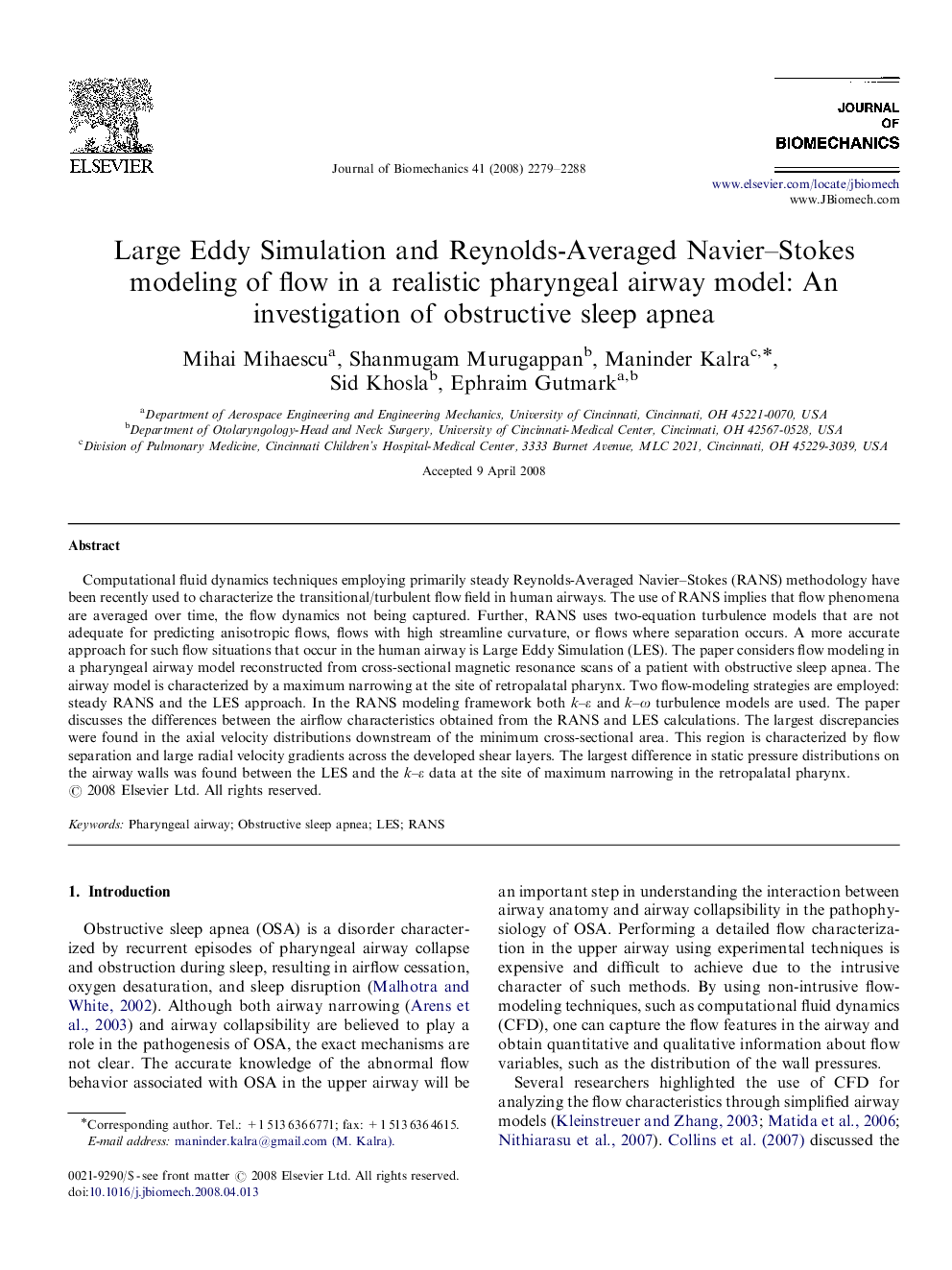| Article ID | Journal | Published Year | Pages | File Type |
|---|---|---|---|---|
| 873942 | Journal of Biomechanics | 2008 | 10 Pages |
Computational fluid dynamics techniques employing primarily steady Reynolds-Averaged Navier–Stokes (RANS) methodology have been recently used to characterize the transitional/turbulent flow field in human airways. The use of RANS implies that flow phenomena are averaged over time, the flow dynamics not being captured. Further, RANS uses two-equation turbulence models that are not adequate for predicting anisotropic flows, flows with high streamline curvature, or flows where separation occurs. A more accurate approach for such flow situations that occur in the human airway is Large Eddy Simulation (LES). The paper considers flow modeling in a pharyngeal airway model reconstructed from cross-sectional magnetic resonance scans of a patient with obstructive sleep apnea. The airway model is characterized by a maximum narrowing at the site of retropalatal pharynx. Two flow-modeling strategies are employed: steady RANS and the LES approach. In the RANS modeling framework both k–ε and k–ω turbulence models are used. The paper discusses the differences between the airflow characteristics obtained from the RANS and LES calculations. The largest discrepancies were found in the axial velocity distributions downstream of the minimum cross-sectional area. This region is characterized by flow separation and large radial velocity gradients across the developed shear layers. The largest difference in static pressure distributions on the airway walls was found between the LES and the k–ε data at the site of maximum narrowing in the retropalatal pharynx.
